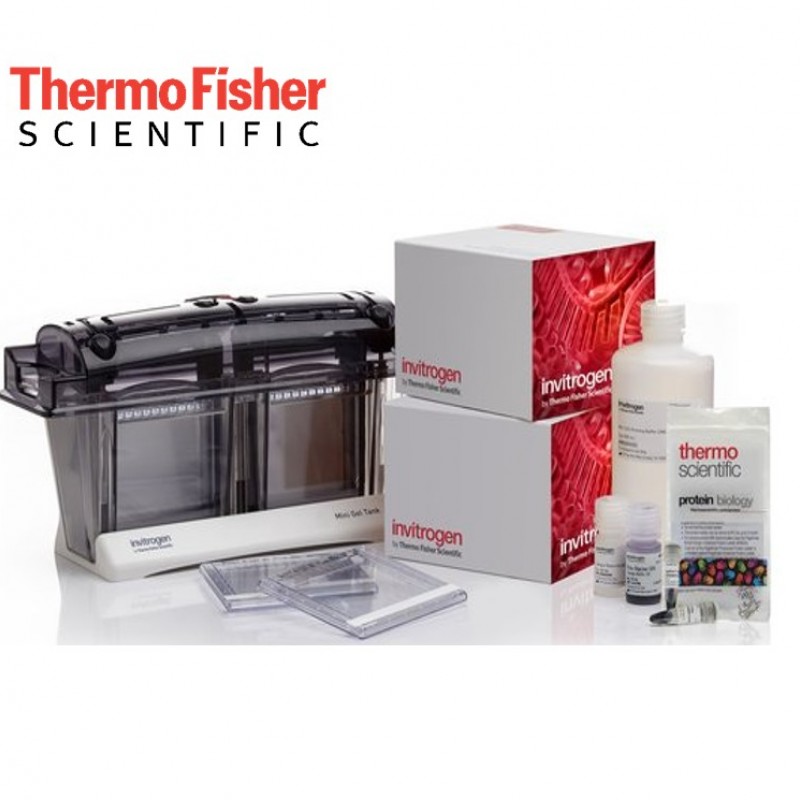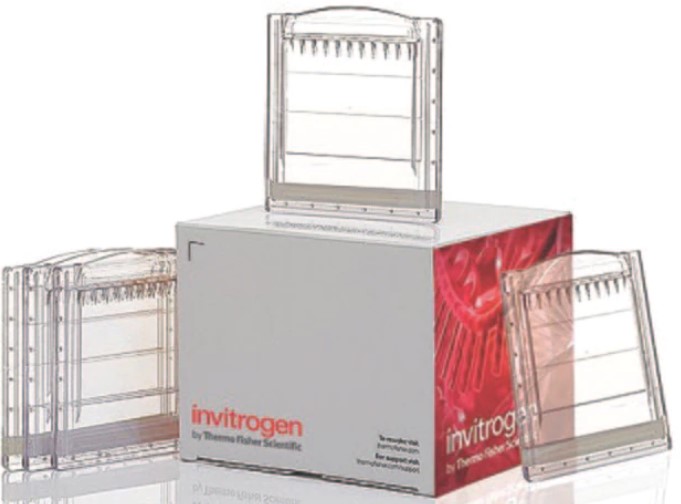

|
Tricine Protein Gels Specifications |
|
| Available Gel Sizes | Mini: 8 cm x 8 cm (1.0 mm thick) |
| Storage Conditions | 2–8°C |
| Shelf Life | 1-2 month |
| Recommended Sample Buffers | Tricine SDS sample buffer |
| Recommended Running Buffers | Tricine SDS running buffer |
| Recommended Transfer Buffers | Tris-glycine transfer buffer |
| Gel Chemistry | Tricine |
| Available Polyacrylamide Concentrations | 10%, 16%, 10-20% |
| Separation Range | 2–20 kDa |
| For Use with (Equipment) Mini Gels | Mini Jel Tank or XCell SureLock Mini-Cell |
| Mode of Separation | Molecular Weight |